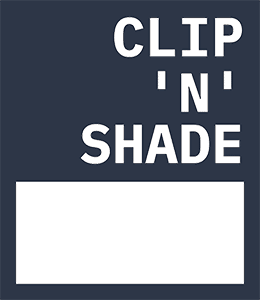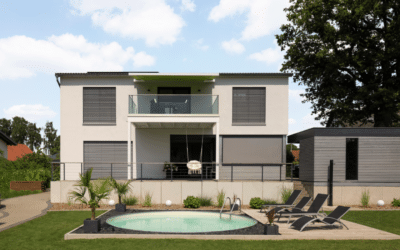Roller blinds are a topic that is not dealt with on a daily basis. The many terms often pose more of a mystery than they do a clear communication. That is why we have created a small roller blind lexicon here.
| (Interior) blind | Internal product with curtain made of aluminum slats. Advantage: Good privacy and glare protection effect. Disadvantage: No heat protection effect as it is internal. Time-consuming cleaning. Click here for an example. |
| External venetian blind | External product with curtain made of aluminum slats. Advantage: Best heat protection with simultaneous use of daylight. Reversible slats can also provide privacy, glare protection and darkening, depending on the situation. Disadvantage: High price. Time-consuming cleaning. Click here for an example. |
| (Interior) roller blind | Internal product with fabric blind. "Roller blind" always refers to a fabric blind that is rolled up on a shaft and operated by means of a ball chain, electric motor or simply by hand. Advantage: Good privacy and glare protection. Disadvantage: No heat protection effect as it is internal. Click here for an example. |
| Exterior blind | External roller blind - by definition, an external sun protection system with fabric blinds. Beware of confusion: in colloquial language, "roller blind" is often used as an abbreviation for roller shutter. Advantage: Ideal heat protection. Depending on the fabric properties, the best heat protection with simultaneous use of daylight or darkening including privacy protection is possible. Disadvantage: None Click here for an example. |
| Roller shutter | External product with aluminum or PVC-U slats. Advantage: Good thermal insulation properties. Complete darkening possible. Disadvantage: Not transparent - heat protection and use of daylight are in conflict. Click here for an example. |
| Pleated blind | Internal product. The fabric is not rolled up, but is folded and pushed together like an accordion. Special feature of honeycomb pleated blinds: The fabric is honeycomb-shaped. Advantage: Very modern look. Good privacy and glare protection. Disadvantage: No heat protection effect as it is on the inside. Click here for an example. |
| (Terrace) awning | External product. Mainly on terraces or balconies. As a rule, a cassette is attached to the house wall. A fabric blind is rolled onto a shaft in this cassette. This fabric blind can be extended horizontally using articulated arms. Click here for an example. |
| Clamp marker | Similar to a patio awning. However, the awning is not attached to the house wall using a drill and dowels, but is instead attached using two standpipes, which are clamped at the top and bottom between the floor and, for example, the roof overhang. Click here for an example. |
| Window awning/ Facade awning/ Vertical awning/ Markisolette |
See external roller blind. Special feature of the Markisolette: Here, the fabric blind does not move downwards in the traditional way, but is attached to so-called drop arms that swing out forwards. However, a cross strut only allows this "extension" from a certain depth. Click here for an example. Special feature of drop-arm awnings: Similar to awnings, but without the cross strut. Click here for an example. |
Learn more about the advantages and disadvantages of indoor and outdoor roller blinds in our article "Comparison: Indoor vs. outdoor roller blinds".







